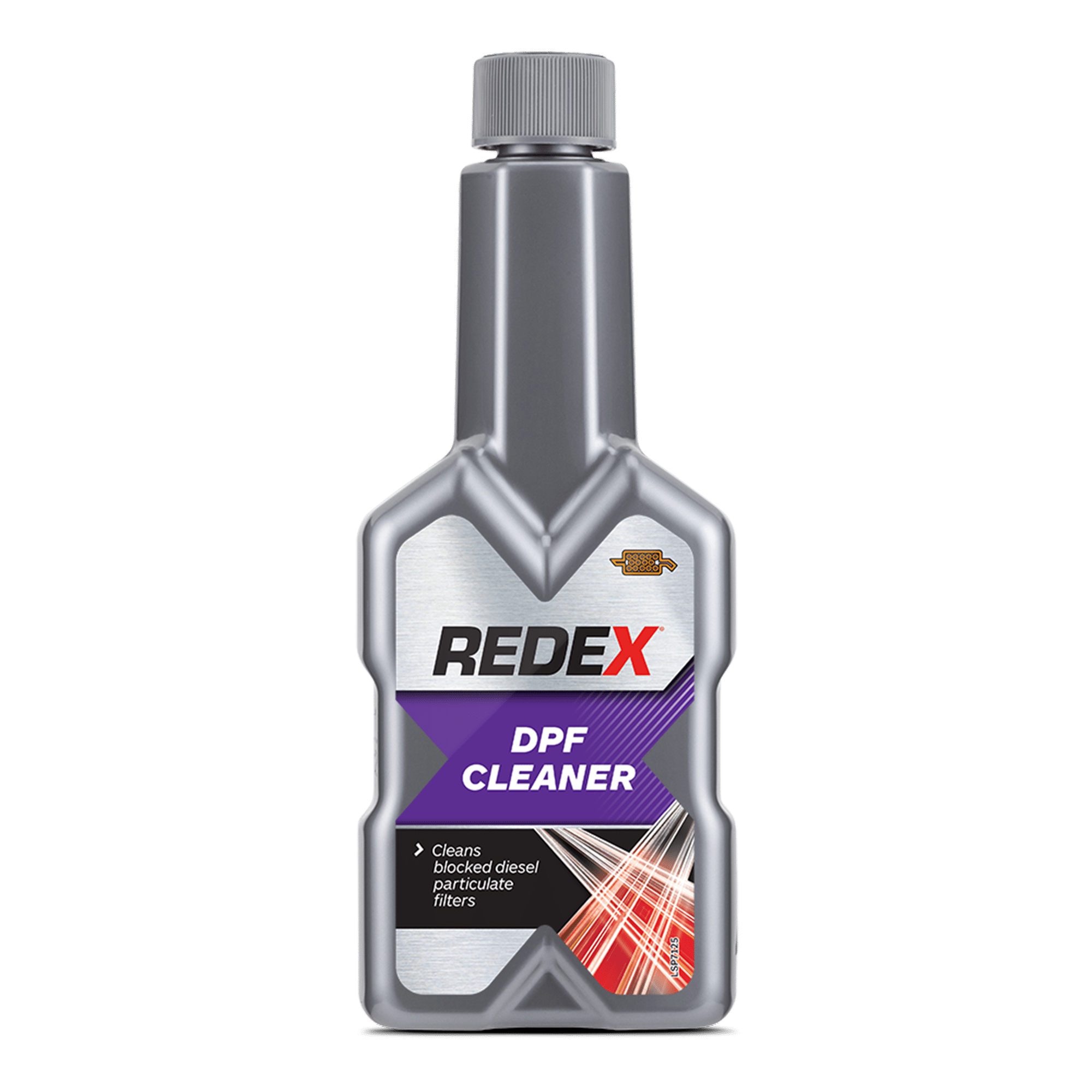If you own a diesel car manufactured after 2009, it will feature a device called a Diesel Particulate Filter (DPF). Introduced by carmakers to help reduce exhaust emissions, DPFs unfortunately have an obvious flaw in that they can quickly become blocked, resulting in the hassle of a breakdown and a potentially costly repair bill.
While you’d expect it would be difficult to block the exhaust DPF, it’s actually a lot easier than you might think with normal driving. Frequent short journeys, the wrong engine oil or problems with other engine components can contribute to a blocked DPF — and the problem is thought to have affected thousands of drivers since they were introduced.
To help you avoid the hassle of a blocked DPF, here we offer further information on what it is and how you can prevent the problem.
What is a DPF?
A petrol engine heats up faster than a diesel engine, meaning that they burn off harmful particulates before they are exhausted. Because diesel engines take longer to heat up, do not get hot enough to burn the soot off, meaning they would be pumping out lots of soot if not for a DPF.
The Diesel Particulate Filter was introduced to help diesel cars pass increasingly tough emissions tests. Its job is to trap soot particles produced through the burning of diesel and prevent them from entering the atmosphere.
If driven correctly, a diesel particulate filter shouldn’t require any additional maintenance to clean it.
What causes DPF issues?
If a DPF filter is working correctly, you may notice a decrease in MPG and the engine could be running at higher revs. For some vehicles, the fan may continue to run after you stop. If you start to notice issues like poor performance, reduced fuel economy or the DPF light on the dashboard, then you might have a problem with your DPF.
The usual cause of DPF issues is not running the car for long enough at high enough revs. This issue can be avoided by driving for about 30 minutes at revs exceeding 2,500rpm.
Most of the time, DPF issues are caused by too many short journeys, which don’t allow the DPF to get sufficiently hot to burn off the soot.
How to know if your DPF is blocked
Aside from a DPF warning light on the dashboard, there are plenty of tell-tale signs that there’s a blockage in the system. Some of the warning signs to watch out for include:
- Reduced engine power
- Lack of revs when you press the accelerator
- Dark smoke from the exhaust when accelerating
- Ignition problems
Remember: if your DPF is blocked, one of the first signs is a warning light on the dashboard. The symptoms of a blocked DPF are similar to other faults, so if you’re not seeing a DPF warning light, we’d recommend taking your car to a professional mechanic to diagnose the issue.
What is DPF regeneration?
Rather than cleaning the DPF, the term used by professionals is ‘DPF regeneration’ as, technically, the soot particles are burnt off from the filter to ‘regenerate’ it. This usually happens automatically when the engine reaches a certain temperature — normally at motorway speed, or during a long drive if you’re driving more slowly. This is referred to as passive DPF regeneration as neither the driver nor the car does anything out of the ordinary – it just happens.
What is ‘active’ DPF regeneration?
Recognising that many diesel cars don’t get the right kind of use to make high-speed DPF regeneration a reliable option, some car manufacturers have turned to ‘active’ regeneration to solve the issue of a clogged particulate filter. This is when engine control software monitors when the DPF is becoming blocked and starts a process in which more fuel is injected into the engine to increase the temperature, triggering regeneration.
Active regeneration takes around 5 to 10 minutes to complete and normally happens every 300 miles or so depending on how you drive and how often you use your car. When active regeneration is taking place, you may notice a change in how the car sounds and feels – this is due to increased power to the cooling fans and a faster engine idling speed.
You might also find that the automatic start/stop function doesn’t work, or that there’s a strong smell coming from the exhaust. This is normal, and your car should return to normal after the cycle is finished.
Active regeneration isn’t a fool-proof solution, however. If you only ever make quick trips around town in your car, it can be easy to interrupt the process. Switching your car off while it’s halfway through active regeneration can cause problems and may mean the filter hasn’t been properly unclogged.
What is ‘passive’ DPF regeneration?
Unlike active regeneration, ‘passive’ regeneration occurs naturally during everyday driving. If, for example, you spend a lot of time driving on the motorway, your car’s DPF should stay clear due to the process of passive regeneration – wherein the heat of the exhaust emissions is high enough to prevent the filter from becoming blocked.
The main difference between passive and active DPF regeneration, then, is that active regeneration is triggered by the ECU when sensors detect that the DPF is getting clogged, while passive regeneration happens when the correct speeds are maintained for a long enough period to keep the filter clear during day-to-day driving.
How to unblock a DPF
If your car throws up any warning signs that the DPF is blocked, there are a few ways you can rectify this problem.
Active or passive regeneration
These methods occur with no intervention from the driver, simply by driving your car normally. Active regeneration takes place about every 300 miles, whereas passive regeneration takes place whenever you drive at sufficient speeds for about 30 minutes while exceeding 2,500rpm.
Forced regeneration
Forced regeneration is a process that must be undertaken when your car becomes inoperable due to a blocked DPF. This process should be undertaken by a professional with the proper diagnostic tools and experience.
Use a DPF cleaner or get a professional DPF clean
Using a high-quality DPF cleaner like Redex’s DPF Cleaner can help the DPF to purge soot from the filter by lowering the temperature at which the soot burns. Simply follow the instructions on the bottle, and the DPF cleaner will get to work. Redex’s DPF is specially designed to be up to 30% more efficient than other products on the market, giving you peace of mind that the blockage will be cleaned quickly. However, it’s important to note that the vehicle still requires passive regeneration to purge the soot.
How to Avoid DPF Issues
DPF issues can be caused by a few different things, meaning that there are plenty of things to avoid if you’d like to look after the long-term health of your car.
Avoid idling
Idling can cause particulates to accumulate over time because DPF doesn’t have a chance to burn them off.
Carry out regular oil checks
Dirty or old oil can cause the DPF to become less effective due to the high amounts of ash that they put out. Regularly checking the health of your engine oil can alleviate this.
Drive longer distances
Driving longer distances allows the car to begin the regeneration process, clearing particulates from the DPF.
Avoid switching the engine off during regeneration
To get the most out of the regeneration process, you must allow it to be completed by keeping the engine on until it’s finished. You will notice a change in the engine speed and tone.
Note: Some manufacturers’ engines stay running after, so this wouldn’t apply to you. Check your user manual for instructions.
Use a DPF cleaner
As mentioned above, a DPF cleaner can help to reduce DPF issues by lowering the temperature at which the particulates will burn off, leading to more efficient passive regeneration.
Get regular services
Regular services can help identify problems with the DPF before they become serious issues.
Blocked DPF FAQs
If you still have questions about DPFs, don’t worry because we’ve got a long list of FAQs that should answer any questions you might still have.
What happens if my car breaks down due to a blocked DPF?
If the dashboard warning light is ignored or the DPF is not regenerated by taking the car on a motorway for a good run out, it can become more blocked and the engine will eventually go into ‘safe’ or ‘limp’ mode. At this point, you will most likely see a new dash warning saying that the car should be taken to a garage resulting in a repair which could be expensive.
The garage may be able to force the DPF regeneration by connecting the engine management system to a diagnostics machine. This typically costs around £250 but can also damage the DPF through thermal shock.
And don’t think you can have the DPF filter removed to save cash, either. While it is technically possible, and the car would continue to run as normal, a missing DPF filter will result in an automatic MOT failure and could invalidate the car’s warranty, leading to more expensive repair bills.
What are the legal consequences of removing a DPF filter?
DPF filter issues can be an annoying problem for diesel car drivers, so it’s easy to see why someone would want to remove the filter completely to stop it from causing issues.
However, as DPFs remove so many harmful particles from engine emissions, you could face significant penalties for cutting the DPF out of your car’s exhaust system.
DPFs are fitted to diesel cars to meet European emissions regulations, so it’s actually an offence to remove them, and you could be fined under the Road Vehicles (Construction and Use) Regulations Act. It can also invalidate your insurance and cause you to fail your MOT. Previously, removing your DPF meant instant MOT failure, but under changes brought in in 2018, you can fail if it’s still in place, but has been tampered with. It basically needs to be intact and working or you’ll fail your MOT.
So, while you might think removing your car’s DPF will save money on potential repair bills, the consequences will almost certainly cost you more in the long term.
Can a Blocked DPF Cause an MOT Fail?
Categorically, yes. A warning light on the dashboard indicates a blocking and is an automatic MOT failure.
If you’ve had your DPF removed your car will fail its MOT. DPF checks have been part of the annual MOT since 2014.
What is the cost of a new DPF?
There’s no getting around it: replacing a DPF is expensive. If you need to buy a new one, it could set you back £2,000-£5,000 depending on the make and model of your car.
The good news is that provided you keep on top of clearing your car’s DPF and, obviously, don’t remove it, you should never require a replacement.
So, there you have it: you should now know how to approach a blocked DPF. For more diesel-related car maintenance advice, be sure to check out the Redex blog and advice pages.



